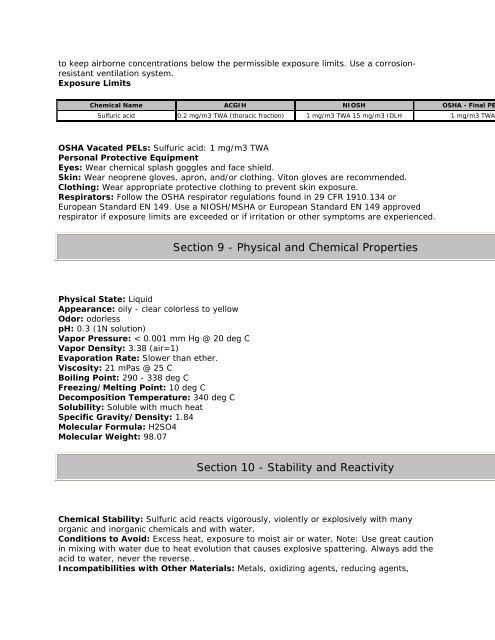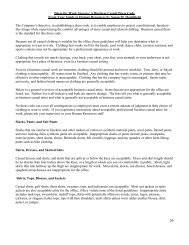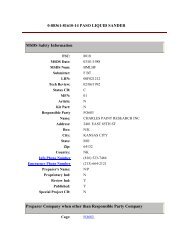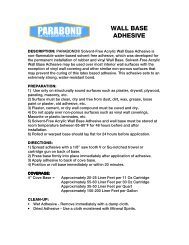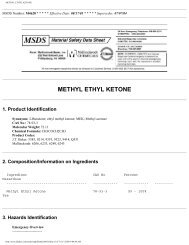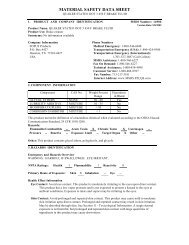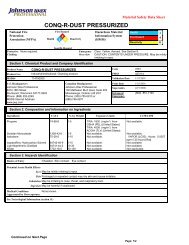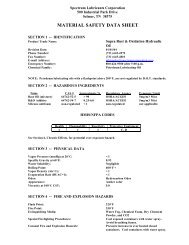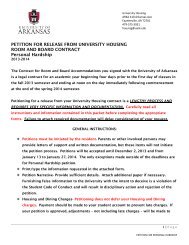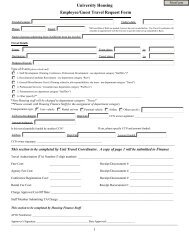Material Safety Data Sheet
Material Safety Data Sheet
Material Safety Data Sheet
You also want an ePaper? Increase the reach of your titles
YUMPU automatically turns print PDFs into web optimized ePapers that Google loves.
to keep airborne concentrations below the permissible exposure limits. Use a corrosionresistant<br />
ventilation system.<br />
Exposure Limits<br />
Chemical Name ACGIH NIOSH OSHA - Final PE<br />
Sulfuric acid 0.2 mg/m3 TWA (thoracic fraction) 1 mg/m3 TWA 15 mg/m3 IDLH 1 mg/m3 TWA<br />
OSHA Vacated PELs: Sulfuric acid: 1 mg/m3 TWA<br />
Personal Protective Equipment<br />
Eyes: Wear chemical splash goggles and face shield.<br />
Skin: Wear neoprene gloves, apron, and/or clothing. Viton gloves are recommended.<br />
Clothing: Wear appropriate protective clothing to prevent skin exposure.<br />
Respirators: Follow the OSHA respirator regulations found in 29 CFR 1910.134 or<br />
European Standard EN 149. Use a NIOSH/MSHA or European Standard EN 149 approved<br />
respirator if exposure limits are exceeded or if irritation or other symptoms are experienced.<br />
Section 9 - Physical and Chemical Properties<br />
Physical State: Liquid<br />
Appearance: oily - clear colorless to yellow<br />
Odor: odorless<br />
pH: 0.3 (1N solution)<br />
Vapor Pressure: < 0.001 mm Hg @ 20 deg C<br />
Vapor Density: 3.38 (air=1)<br />
Evaporation Rate: Slower than ether.<br />
Viscosity: 21 mPas @ 25 C<br />
Boiling Point: 290 - 338 deg C<br />
Freezing/Melting Point: 10 deg C<br />
Decomposition Temperature: 340 deg C<br />
Solubility: Soluble with much heat<br />
Specific Gravity/Density: 1.84<br />
Molecular Formula: H2SO4<br />
Molecular Weight: 98.07<br />
Section 10 - Stability and Reactivity<br />
Chemical Stability: Sulfuric acid reacts vigorously, violently or explosively with many<br />
organic and inorganic chemicals and with water.<br />
Conditions to Avoid: Excess heat, exposure to moist air or water, Note: Use great caution<br />
in mixing with water due to heat evolution that causes explosive spattering. Always add the<br />
acid to water, never the reverse..<br />
Incompatibilities with Other <strong>Material</strong>s: Metals, oxidizing agents, reducing agents,


